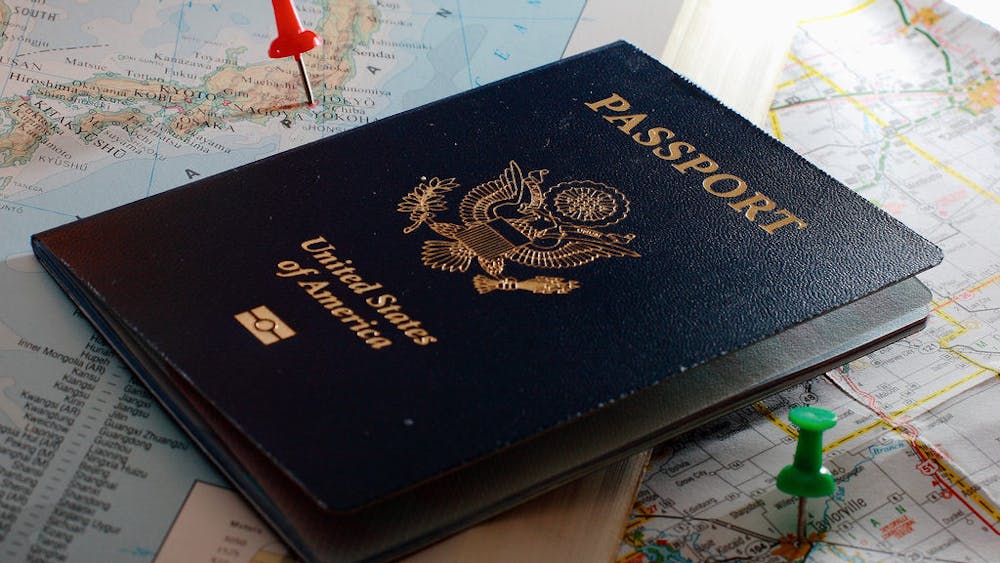The United States issued its first passport with an “X” gender marker Oct. 27.
This milestone is the product of a lengthy legal battle waged by military veteran and activist Dana Zzyym. When Zzyym, an intersex person born with ambiguous sexual characteristics, applied for a passport in 2014, the U.S. State Department denied their application because of their request for a neutral gender marker (despite the existence of extensive medical certification and Zzyym’s gender-neutral birth certificate). Zzym filed a lawsuit in 2015, which they eventually won; now, almost seven years since their initial application, they’ve finally received their passport.
Passports and Consular Reports of Birth Abroad (CRBAs) with an “X” gender marker will be made available to the general public in early 2022, according to the Bureau of Consular Affairs. Additionally, the U.S. will no longer require medical certification to request a change of gender on official consular documents — meaning Americans can now obtain passports that display their correct gender identity, even if their other identifying documents do not.
The LGBTQIA+ community has been vocal in celebrating the policy change, which was announced the day after Intersex Awareness Day. But why are these new passport rules such a significant step forward for transgender, nonbinary and intersex rights?
Historically, laws about gender identity on official documentation have been a disorganized patchwork largely left up to state governments. Twenty states and Washington D.C. allow the “X” gender marker on drivers’ licenses; fifteen allow it on birth certificates. The requirements to request a change of gender on official documentation also differ by state — twenty-two states have a policy of “self-attestation”, or letting people decide on their own what gender marker is appropriate for them, while most of the other twenty-eight require medical certification, additional identifying documents or a court order. Some states have no stated policy whatsoever. In others, changing the gender marker on your ID is explicitly forbidden.
Even in self-attestation states, the cost of changing your gender marker on official documentation (usually more than $750) is unaffordable to many. In states where medical certification or court orders are required, paying the necessary fees for legal proceedings (which sometimes do not succeed) and medical procedures (which some transgender, nonbinary and intersex people don’t want to undergo in the first place) will often result in a bill of tens of thousands of dollars.
But not having the correct gender on your identification is often cause for endless frustration at best and imminent danger at worst. Many have been incorrectly accused of falsifying official documents when forced to present multiple forms of identification with different gender markers (for example, when applying for a job or proving residency). In healthcare settings, gender markers on patients’ insurance cards are routinely used to deny not only trans-affirming care, but also completely unrelated medical procedures (such as preventative cancer screenings and even treatment for things like migraines, gastrointestinal issues and physical injuries). Transgender people whose ID doesn’t match their gender presentation are at risk of discrimination in employment and housing, verbal harassment and physical violence.
The United States allowing “X” gender markers and self-attestation for gender changes on passports doesn’t magically make all these issues go away — it’s not yet clear how states that have passed anti-trans legislation will respond to the new standard, and it doesn’t erase the many forms of systemic discrimination that non-cisgender people face. Still, it’s a crucial step in the right direction. Having a passport with the right gender identity makes it easier to correct other official documents, maintain personal safety, and live life authentically while being treated with dignity and respect.
One of the people most excited about the new policy is, naturally, Dana Zzyym themself. “I almost burst into tears when I opened the envelope, pulled out my new passport, and saw the ‘X’ stamped boldly under ‘sex,’” Zzyym said in a public statement on Oct. 27. “I’m also ecstatic that other intersex and nonbinary U.S. citizens will soon be able to apply for passports with the correct gender marker. It took six years, but to have an accurate passport, one that doesn’t force me to identify as male or female but recognizes I am neither, is liberating.”
Get The Chronicle straight to your inbox
Signup for our weekly newsletter. Cancel at any time.

